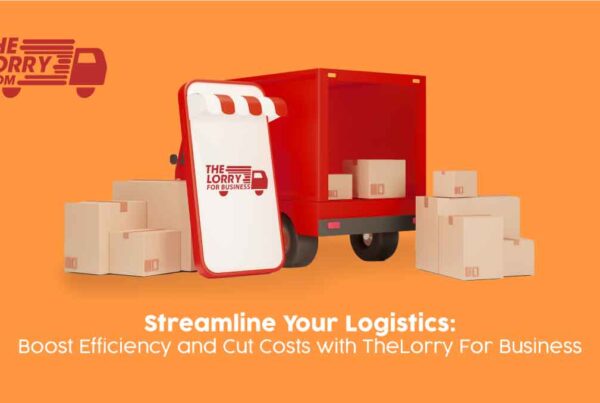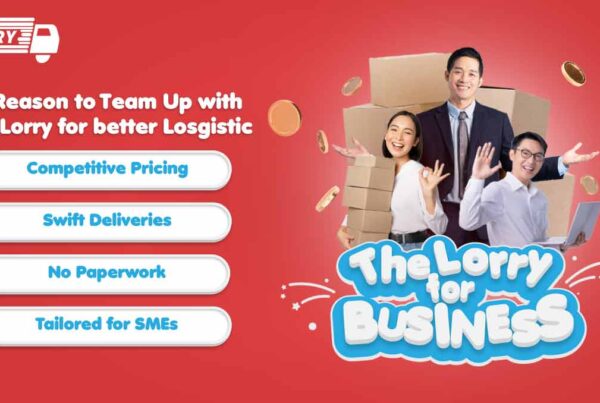
At TheLorry, we often use the term Uber for lorries when we explain to others what we do. In the past 2 years, our effort was mainly to connect lorry drivers with customers, offering an on-demand lorry booking service.
Contrary to general perception, when Nadhir and I started TheLorry, we often used AirAsia as a reference instead. We have always talked about how to bring down logistics cost with technology and hopefully one day we could achieve “Now Everyone Can Truck” because it is affordable.
To read on TheLorry’s journey you may refer to Nadhir’s articles, that would bring you up to speed on what we have done so far:
- Making thelorry.com/my – How We Started
- Making thelorry.com/my?- A Journey From Idea Validation to Being VC-Funded
- Making thelorry.com/my – A Year of Growth and Learning
The vision hasn’t changed after 2 years, we are still working to be the go-to place when someone needs a lorry (or van or pickup truck).
I’m glad to say our hard work has paid off, currently we have a 98% fulfilment rate, and the platform is highly automated compared to when we started the business.
I feel it is the right time to work on stage 2 of our vision – bringing logistics cost down.
I’ve always admired how AirAsia made affordable travel happen. They truly lived up to their slogan – Now everyone can fly. What is the secret to it, you may ask? As anyone with a basic understanding of math will happily tell you, high capacity utilization drives unit cost down, given a fixed operating cost.
I would like to relate that to road freight – if AirAsia with hundreds of airplanes could make affordable traveling a reality, then the road logistics industry must have a bigger potential since there are hundreds of thousands of registered commercial vehicles in the country.
If the capacity utilization can be maximized (or close to it), the cost should go down by a lot. With that, the cost of doing business will be lowered and end users could enjoy a lower cost of living.
Having signed up thousands of drivers on our platform, we have always heard about their primary concern – having a one-way traffic.
Most days they will have delivery from point A to point B but returning to A with an empty vehicle. What if this problem could be solved? What impact would it bring to the drivers or even the whole society?
Imagine this – now you are paying the full 100% cost for two-ways, as drivers would need to cover their cost returning to origin.
What if they could always find another job on their way back? If they charge 60% of the current price for both ways, they would end up with 120% of what they earn now. Customers then save up to 40% each.
This is, of course, easier said than done, but not impossible. I feel the industry is lacking a player to put all the stakeholders together in terms of resources optimization.
Even though there are a large number of commercial vehicles, they are owned by many different companies and individuals who are not collaborating and working with each other in a robust platform. Talk about sharing economy, this is exactly what the trucking industry needs.
We feel that it is the right time to push this forward.
As of now, we have high % of fulfilment. In other words, we have a sustainable ecosystem whereby the supply (drivers) is sufficient to support the demand (customers).
After 2 years of pitching how technology would change the industry, we can see that the user behaviour on both sides have changed significantly.
The drivers who were once so reluctant to use smartphones to carry out their jobs are now dependent on these devices to make their living. It is easy to get them to use a new feature now that would further enhance their income.
If all our drivers (thousands of them) start using this feature, we would have thousands of return trips a day which customers could benefit from. Bear in mind, that is only a low single-digit % of total registered commercial vehicles in the country.
Some may argue that it would cannibalize our existing business.
We are looking at it from a different perspective. If this becomes a reality, everyone (no matter what business you are in, you would most likely have logistical needs) would benefit from a lower logistics cost, and the savings would then be passed down to end users.
It would be a cyclical effect that people can then purchase more hence pushing volume higher. We see it as a win-win-win situation for transporters, customers, and us being the facilitator.
With more volume created through a lower logistics cost, drivers can potentially earn a higher income.
It is also our sincere intention to change the perception we as Malaysians have towards lorry drivers, we hope they can be regarded as professionals one day, and people would not be ashamed of being a lorry driver. They are earning an honest income through their hard work, no different from pilots!
To recap, our grand vision consists of multiple stages, and we are only initiating stage 2 now:
- Recruit enough supply to run an on-demand business
- Leveraging on the huge network to achieve cost efficiency by maximizing capacity utilization
- More to come!
To make this a reality, we need buy-in from customers and drivers. It is going to be a long-term mission, but once they see the benefits, there’s no reason for them to not support the idea!
Delivering The Future,
Chee Hau




 MY – EN
MY – EN Singapore
Singapore Indonesia
Indonesia